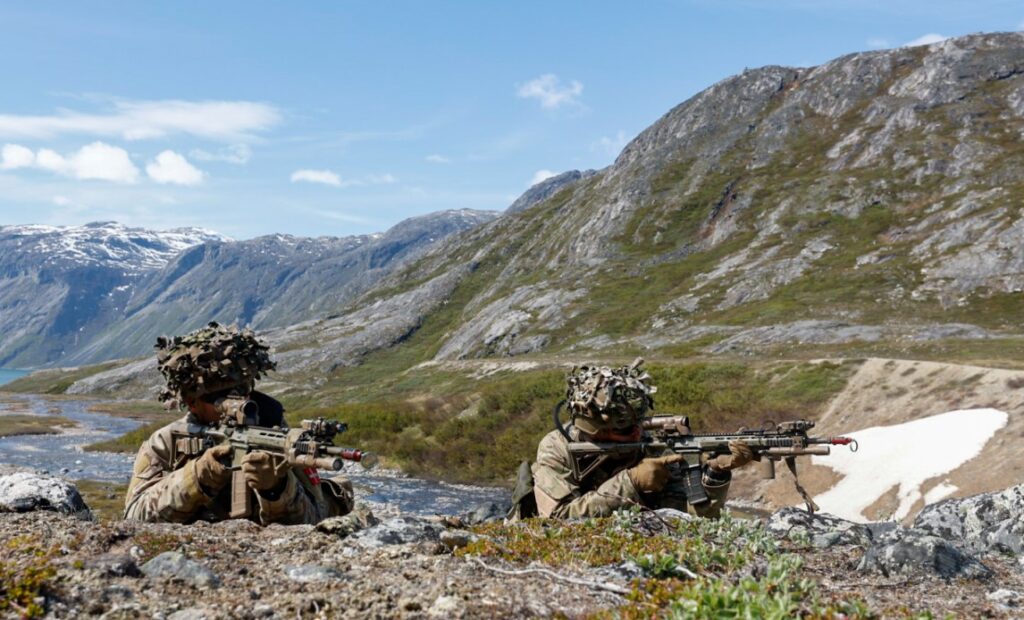The Danish military led a five-nation contingent of NATO allies in September 2025 on a comprehensive exercise to defend Greenland, a largely autonomous overseas territory of the Kingdom of Denmark. Greenland has become a Western security flashpoint in recent years as melting ice has led to increased interest in the Arctic from the Chinese Communist Party (CCP) and Russia. The Arctic Light exercise, which ran from September 9 to 19, was a “short-notice planned-activity exercise,” involving more than 550 troops from Denmark, France, Germany, Norway and Sweden. The exercise is the latest version of many similar operations in recent years, according to The Associated Press.
Danish special forces boarded ships from helicopters on September 15, the same day Danish Defence Minister Troels Lund Poulsen spoke to the media about the operation. The helicopter drills, witnessed by military observers from Canada, Germany, Sweden, the United Kingdom and the United States, marked the start of a comprehensive training that also tested the lines of communication between Greenland and Copenhagen, which is 3,547 kilometers away from Nuuk, the capital of its sparsely populated territory. The maneuver encompassed search and rescue operations and various defensive maneuvers, involving land, maritime and air assets.
The joint operations demonstrated European commitment to the defense of Denmark, a founding NATO member, according to media reports. The Danish military characterized Arctic Light as a demonstration of “joint response capabilities against destabilizing threats to Greenland, the Kingdom of Denmark, and NATO in the North Atlantic and Arctic regions,” according to a Danish military news release.
Danish Armed Forces deployed the frigate Niels Juel, two EH-101 helicopters, two F-16 fighter jets and contributions from all three branches of the armed forces, including special operations forces and the Danish Home Guard, according to the Danish Defence Ministry. France deployed the naval ship Garonne, a multirole tanker aircraft and mountain infantry equipped with drones. Norway and Sweden sent Home Guard units. Germany provided support personnel, the ministry stated.
Poulsen, who observed the helicopter assault with Norwegian Defence Minister Tore O. Sandvik and Iceland’s Foreign Affairs Minister Thorgerdur Katrín Gunnarsdóttir, said in a statement that “the current security situation requires that we significantly strengthen the Danish Armed Forces’ presence in the Arctic and the North Atlantic.”
“Arctic Light 2025, with the participation of NATO allies, is a good example of our standing together to strengthen the Danish Armed Forces’ ability to counter threats in the Arctic,” Poulsen’s statement continued, according to the Canadian Broadcasting Corp.
Greenland’s strategic importance in the Arctic dovetails with an increased NATO focus on the High North after a long series of Russian-linked sabotage incidents in the Baltic Sea and Scandinavia, NATO Secretary-General Mark Rutte told audience members at the IISS Prague Defence Summit in Czechia in early September. “And when it comes to hybrid, we are not naive. Hybrid is a cuddly word. It sounds nice, but it means assassination attacks, jamming of planes, attacks on the National Health Service in the United Kingdom, and many other examples. And that’s exactly why NATO Allies are extremely motivated and working day in day out to counter this. And the Russians know that… So, we are stepping up. The Russians noticed. They hate it, and I love that. So that’s good,” Rutte said, according to an official NATO transcript.

